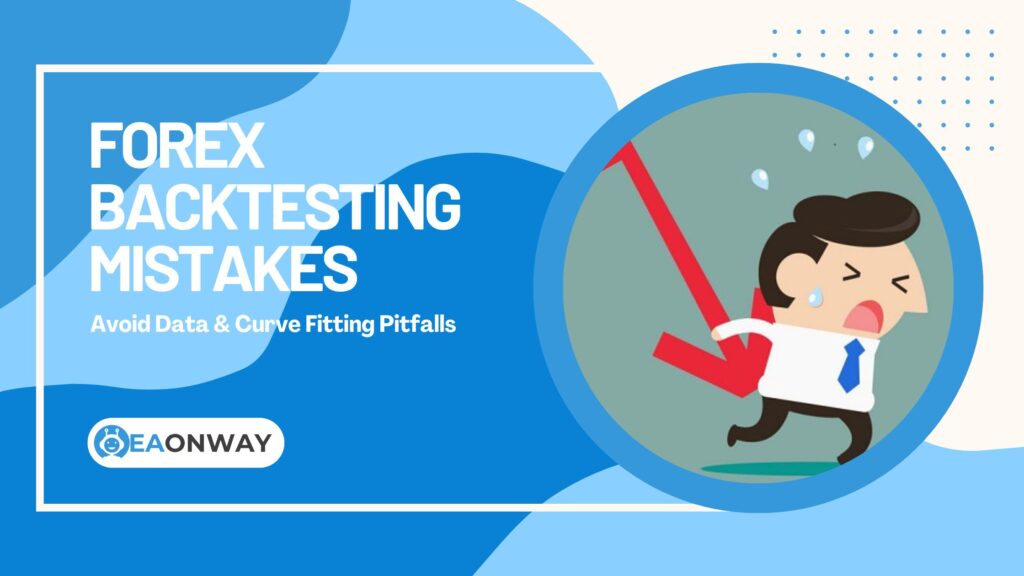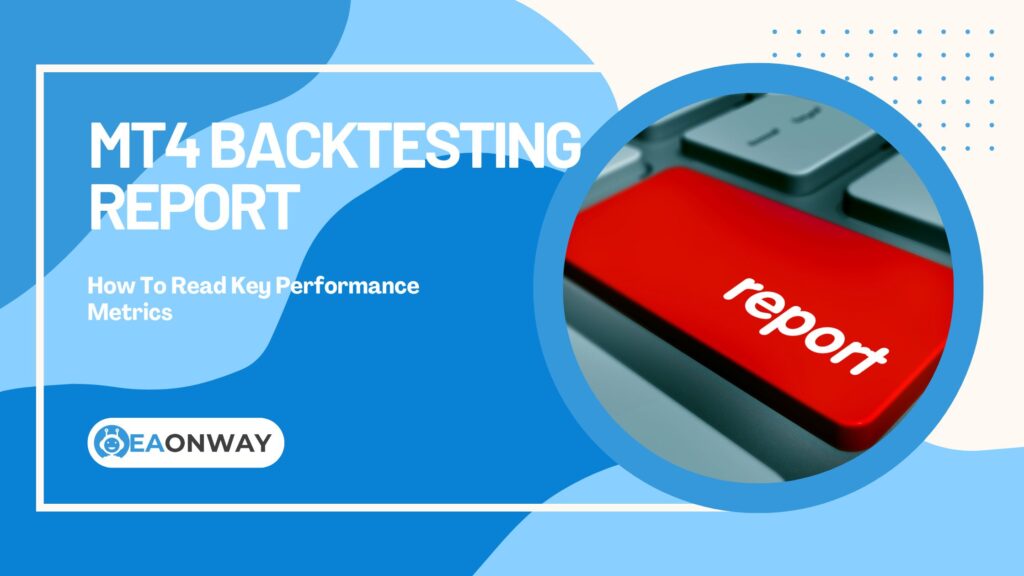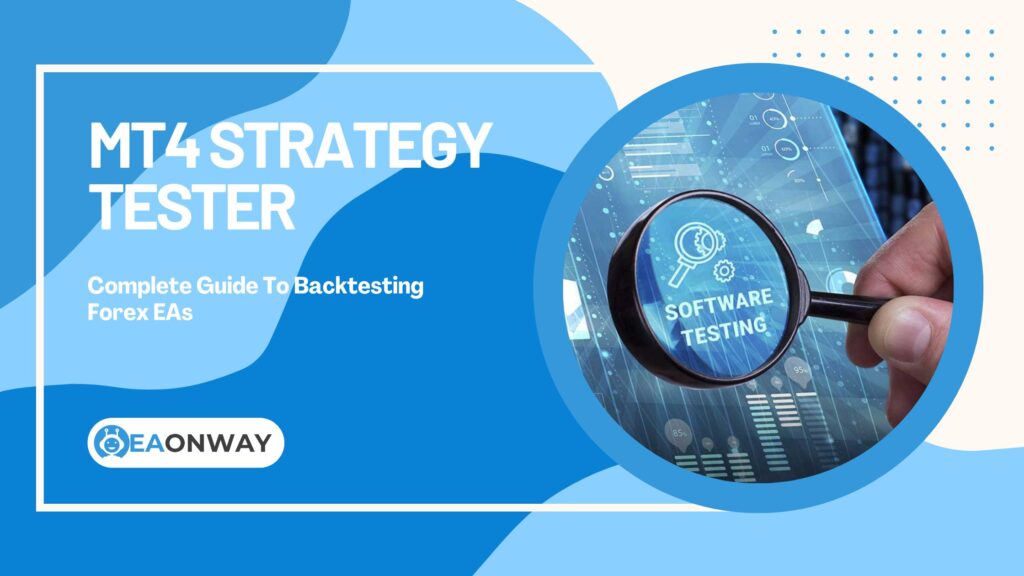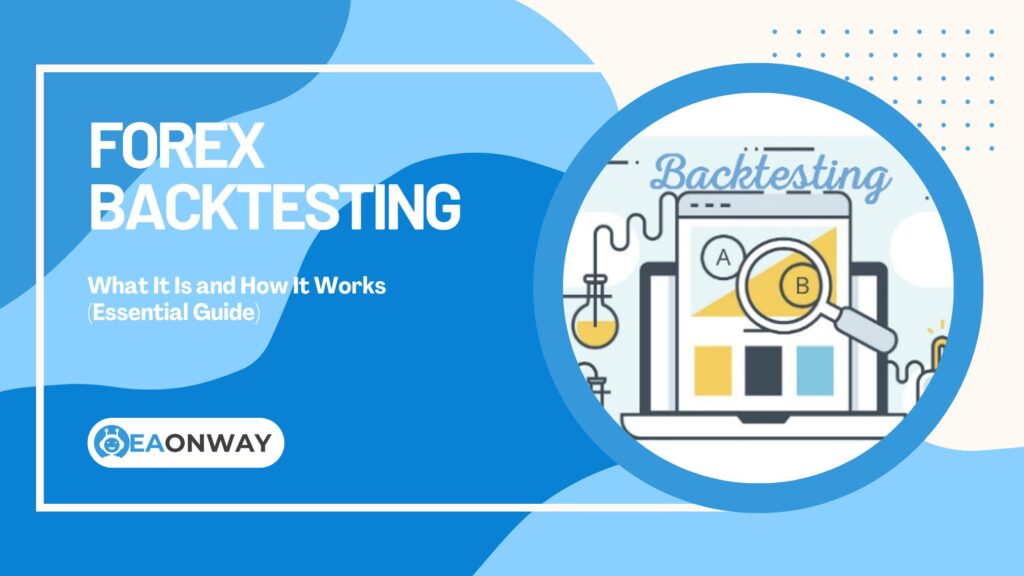Forex Backtesting: Achieving Accuracy with Tick Data & Realistic Spreads
Forex backtesting provides a crucial first step in evaluating an Expert Advisor (EA), but have you ever wondered why a strategy that looks stellar on paper fails miserably in live trading? The difference often lies in the accuracy of your historical simulation. Understanding how to conduct realistic Forex backtesting using high-quality tick data and simulating true market conditions like variable spreads and slippage is essential for setting proper expectations and avoiding costly mistakes. Many traders encounter disappointment when their automated strategies underperform compared to historical tests, frequently because the testing environment didn’t accurately reflect live market dynamics.
This article delves into the critical components of improving Forex backtesting accuracy. We’ll explore why standard methods often fall short and provide a clear guide on using tick data, accounting for realistic spreads, slippage, and commissions. Our goal is to equip you with the knowledge to perform more reliable EA evaluations, understand the inherent limitations, and approach automated trading with a well-informed perspective, focusing on potential risks rather than unrealistic profit guarantees.
Key Takeaways
- Accuracy is Paramount: Inaccurate Forex backtesting leads to false confidence and potential losses in live trading. Standard M1 data often hides crucial price action.
- Tick Data is Essential: Using historical tick data (every price change) provides a much more granular and realistic simulation compared to M1 (one-minute) data.
- Realistic Conditions Matter: Backtests must simulate variable spreads, potential slippage, and broker commissions to reflect real trading costs accurately. Fixed spreads drastically overestimate potential profitability.
- Data Quality is Non-Negotiable: The accuracy of your backtest hinges on the quality and completeness of your historical tick data. Use reputable sources.
- Beware of Overfitting: Designing a strategy that perfectly fits historical data but fails on new data is a major pitfall. Techniques like walk-forward optimization help mitigate this.
- Backtesting ≠ Future Guarantee: Even the most accurate backtest is a simulation of the past, not a prediction of the future. Market conditions change, and risk is always present.
Understanding Forex Backtesting and Its Limitations
Before diving into improvements, let’s establish a clear understanding of what Forex backtesting is, why it’s done, and where standard approaches often go wrong.
What is Forex Backtesting?
Forex backtesting is the process of simulating a specific trading strategy or Expert Advisor (EA) using historical price data. It applies the strategy’s entry, exit, and risk management rules to past market movements to see how it would have performed. The goal is to generate performance metrics like profitability, drawdown, win rate, and risk-reward ratios based on this historical simulation. This simulation relies heavily on the quality of the historical data and the realism of the simulated trading environment.
Why is Backtesting Important for EA Development?
Backtesting serves several critical functions for traders developing or considering using Forex EAs:
- Strategy Validation: It provides an initial assessment of whether a trading idea has historical merit before risking real capital.
- Parameter Optimization: Backtesting allows traders to test different settings (like stop-loss levels, take-profit targets, or indicator inputs) to find potentially optimal configurations, though this carries the risk of overfitting.
- Performance Benchmarking: It establishes baseline performance expectations (e.g., expected drawdown, average profit per trade) based on past data.
- Weakness Identification: A thorough backtest can reveal potential flaws or weaknesses in a strategy’s logic under specific market conditions (e.g., high volatility, trending vs. ranging markets).
- Building Confidence (with Caution): Seeing positive historical results (if achieved realistically) can provide some confidence, but it must be tempered with the understanding that past performance is not indicative of future results.
What Causes Inaccurate Forex Backtesting?
Many factors can lead to backtesting results that paint an overly optimistic or simply incorrect picture of an EA’s potential. Key causes include:
- Poor Data Quality: Using incomplete, inaccurate, or low-resolution data (like M1 instead of tick data) is a primary culprit.
- Unrealistic Spread Simulation: Assuming a constant, fixed spread that is often much tighter than real market spreads significantly inflates performance, especially for strategies sensitive to entry/exit costs like scalping.
- Ignoring Slippage: Failing to account for the difference between the expected fill price and the actual fill price (slippage), which occurs frequently during volatile market conditions or with large orders.
- Omitting Commissions: Not including broker commission costs in the simulation, which directly reduces net profitability.
- Overfitting (Curve Fitting): Tuning strategy parameters excessively to match the specific historical data set perfectly, resulting in a strategy that performs poorly on unseen data.
- Look-Ahead Bias: Accidentally incorporating information into the strategy logic during the backtest that would not have been available at that point in time in live trading.
- Ignoring Latency: Not accounting for the time delay between signal generation, order placement, and execution confirmation.
- Incorrect Handling of Interest/Swaps: Failing to accurately model overnight financing charges or credits (swaps).
The Crucial Role of Data Quality: Tick Data Explained
The foundation of any reliable backtest is the quality of the historical data used. For simulating Forex strategies, especially automated ones, tick data is widely considered the gold standard.
What is Tick Data in Forex?
Tick data represents the most granular level of historical price information available. Each “tick” is a record of every single price change that occurred in the market, including the exact time, the bid price, and the ask price. Unlike aggregated data like M1 (one-minute bars), which only shows the open, high, low, and close price for each minute, tick data captures all the price fluctuations within that minute. Financial markets generate vast amounts of tick data; for instance, highly liquid pairs like EUR/USD can experience numerous ticks every second during active trading hours.
Why Use Tick Data for Backtesting Over M1 Data?
Using M1 data for backtesting, while simpler and requiring less storage, introduces significant inaccuracies, especially for strategies that operate on lower timeframes or are sensitive to precise entry and exit points:
- Intra-Bar Price Movement is Lost: M1 data only provides four price points per minute (OHLC). It doesn’t show how the price moved between the open and close, or in what order the high and low were reached. An EA might trigger an entry, hit a stop-loss, and hit a take-profit all within the same one-minute bar, but an M1 backtest might only see the open and close, leading to a completely different simulated outcome.
- Inaccurate Trigger Simulation: Stop-loss or take-profit orders might be triggered by intra-bar price spikes that are invisible on M1 data. An M1 backtest might assume these orders were never hit.
- False Trade Signals: A strategy might generate an entry signal based on M1 data, but the actual tick data might show that the precise conditions were only met fleetingly or that the spread widened significantly at that moment, making the trade unrealistic.
- Poor Scalping/HFT Simulation: Strategies aiming for very small profits (scalping) or executing trades very frequently are extremely sensitive to the bid-ask spread and precise price movements. M1 data cannot accurately simulate these conditions.
Tick data backtesting simulates the strategy tick-by-tick, providing a much more realistic sequence of price events and allowing for more accurate modeling of order fills, spread impact, and intra-bar risk management.
What is the Difference Between Tick Data and M1 Data Backtesting?
The core difference lies in the resolution and fidelity of the simulation:
| Feature | Tick Data Backtesting | M1 Data Backtesting |
|---|---|---|
| Data Granularity | Every price change (tick) | Open, High, Low, Close per minute (OHLC) |
| Simulation | Follows actual historical price path | Interpolates price movement within bars |
| Accuracy | High (especially for lower timeframes) | Low to Moderate (highly inaccurate for scalping) |
| Intra-Bar Action | Accurately captured | Completely missed or inaccurately modeled |
| Spread Modeling | Can use real historical variable spreads | Often uses fixed or averaged spreads |
| Stop/Limit Orders | Triggered based on actual price ticks | Triggered based on bar High/Low (inaccurate) |
| Data Size | Very Large | Manageable |
| Processing Time | Slow | Relatively Fast |
Essentially, tick data provides the closest possible simulation of how an EA would have interacted with the real market flow, whereas M1 data offers a heavily simplified and often misleading approximation.
Where to Find High-Quality Historical Tick Data?
Obtaining reliable tick data is crucial. Sources include:
- Specialized Data Vendors: Companies dedicated to collecting, cleaning, and providing high-quality historical financial data (e.g., Tick Data Suite, Tickstory, Dukascopy historical data). These often come at a cost but typically offer higher quality and better coverage.
- Some Brokers: Certain brokers provide access to their historical tick data, often downloadable via their platforms or specific tools. Quality can vary.
- Free Sources (Use with Caution): While free sources exist (like Dukascopy’s public data), always verify the data quality, completeness, and timezone consistency. Data gaps or errors can severely skew backtest results.
When selecting a data source, consider:
- Data Completeness: Does it cover the desired currency pairs and time periods without significant gaps?
- Timestamp Accuracy: Are timestamps precise and correctly aligned (e.g., consistent UTC)?
- Bid/Ask Spreads: Does the data include both bid and ask prices to model spreads accurately?
- Data Cleaning: Has the data been checked and corrected for anomalies or errors? Reputable sources often provide details on their cleaning processes.
While no specific regulatory guidance exists solely focused on data quality for retail backtesting, major financial institutions emphasize the importance of data integrity in their risk management frameworks. The quality of historical data directly impacts the reliability of any trading strategy evaluation.
Simulating Realistic Trading Conditions
Beyond using tick data, accurate Forex backtesting requires simulating the costs and imperfections of real trading.
What Are Realistic Spreads in Backtesting?
Realistic spreads are variable and dynamic. They are not fixed at a low number. In live Forex trading, the spread (the difference between the bid and ask price) constantly changes based on:
- Liquidity: Spreads tend to be tighter for major currency pairs during peak trading hours (e.g., London/New York overlap).
- Volatility: Spreads often widen significantly during major news releases, market uncertainty, or periods of low liquidity (like overnight or weekends).
- Broker Pricing: Different brokers have different spread models (fixed vs. variable, commission-based).
Realistic backtesting must incorporate this variability, using either historical spread data corresponding to the tick data or a model that simulates typical spread fluctuations based on time of day and market conditions.
How Do Spreads Affect Forex Backtesting Results?
Spreads are a direct trading cost. Every time a trade is opened, it immediately starts with a small loss equal to the spread.
- Profitability Reduction: The wider the spread, the further the price must move in your favor just to break even. This directly impacts net profitability.
- Impact on Scalping: Strategies aiming for small profits (a few pips) are extremely sensitive. A 1-pip increase in the average spread can turn a profitable scalping strategy into a losing one.
- Entry/Exit Timing: Wider spreads can sometimes prevent limit orders from being filled at the desired price or cause stop-losses to trigger prematurely.
Failing to model realistic, variable spreads is one of the most common reasons for overly optimistic backtest results.
Why Do Simple Fixed Spreads Lead to False Optimism?
Using a low, fixed spread (e.g., 0.5 pips for EUR/USD) throughout a multi-year backtest is highly unrealistic. It ignores:
- News Events: Spreads can widen dramatically (5, 10, 20 pips, or more) during major news releases. A fixed-spread backtest wouldn’t capture the negative impact this has on trades open or triggered during these times.
- Low Liquidity Periods: Spreads naturally widen during session rollovers or weekends.
- Broker Differences: It doesn’t reflect the actual spreads you would encounter with your chosen broker.
This consistent underestimation of trading costs leads to simulated profits that are unattainable in the real market.
How to Implement Variable Spreads in Backtesting
Achieving realistic spread simulation involves:
- Using Historical Tick Data with Spreads: The best method is to use tick data that includes both the historical bid and ask prices for every tick. Your backtesting software can then calculate the actual spread at the moment each trade was simulated.
- Spread Modeling: If only bid or ask price tick data is available, or for simpler simulations, you can model the spread. This might involve setting different average spreads for different trading sessions or using statistical models to add random variations around an average, potentially increasing the simulated spread during known volatile periods. This is less accurate than using true historical bid/ask data.
Why Slippage Simulation Matters in Forex Backtesting
Slippage is the difference between the price at which you expected your order to be executed and the price at which it was actually filled. It can be positive (better price) but is more often negative (worse price), especially during fast-moving markets.
- Causes: High volatility, low liquidity, large order size, network latency.
- Impact: Negative slippage increases entry costs and reduces exit profits (or increases losses), further impacting overall results. Market orders are more prone to slippage than limit orders.
- Simulation: Advanced backtesting platforms allow you to simulate slippage. This might involve adding a random or volatility-dependent amount of slippage (e.g., a fraction of a pip, or more during simulated high volatility) to market order fills and stop-loss triggers.
The Financial Conduct Authority (FCA) specifically warns traders about slippage risks during periods of market volatility, noting that “during volatile market conditions, you may find it difficult or impossible to liquidate a position” and that “your orders may be executed at significantly different prices from those quoted” (Source: Financial Conduct Authority – Market Volatility).
How to Incorporate Commission Modeling in Backtesting
Many brokers, especially ECN (Electronic Communication Network) brokers, charge a commission per trade in addition to the spread.
- Impact: Commissions are another direct trading cost that reduces net profitability.
- Modeling: Your backtesting setup must allow you to input the commission structure of your broker (e.g., $X per lot per round turn). Failing to include commissions, even if seemingly small per trade, can significantly impact the long-term profitability assessment of frequently trading EAs.
Practical Steps to Improve Backtesting Accuracy
Knowing the theory is one thing; implementing it requires the right tools and procedures.
Which Backtesting Software Should You Choose?
Not all backtesting software is created equal. Look for platforms or tools that offer:
- Tick Data Support: The ability to import and process high-quality tick data is fundamental.
- Variable Spread Simulation: Support for using historical bid/ask data or robust spread modeling.
- Slippage Modeling: Options to simulate realistic slippage.
- Commission Modeling: Ability to input custom commission structures.
- High Backtest Quality Score (e.g., MT4/MT5): Platforms like MetaTrader provide a “modeling quality” score. Aim for 99% modeling quality, which indicates tick data usage. Lower scores (e.g., 90% or less) often rely on M1 or interpolated data and are less reliable.
- Flexibility: For advanced users, platforms like Python with libraries (e.g., Backtrader, Zipline) offer maximum customization but require programming skills.
Common choices include MetaTrader 4/5 (with add-ons like Tick Data Suite for high quality), dedicated platforms like StrategyQuant or AlgoTrader, or custom solutions using Python/R.
How to Configure MT4/MT5 for Tick Data Backtesting
Achieving 99% modeling quality in MetaTrader typically involves:
- Acquiring High-Quality Tick Data: Use external tools like Tick Data Suite or Tickstory to download and manage historical tick data for your desired instruments and timeframes.
- Importing Data: Use the external tool to properly format and integrate the tick data into MetaTrader’s Strategy Tester environment.
- Enabling Variable Spreads: Configure the Strategy Tester (often via the external tool’s interface integrated with MT4/5) to use the historical variable spreads from the tick data instead of a fixed spread.
- Setting Slippage/Commissions: Configure these parameters within the Strategy Tester or the external tool’s settings if available.
- Running the Test: Select “Every tick based on real ticks” (or similar wording) as the modeling mode in the Strategy Tester.
Why Are Data Quality Checks Essential?
Before running extensive backtests, perform basic checks on your historical data:
- Check for Gaps: Look for missing periods in the data.
- Analyze Spreads: Plot the historical spread over time. Look for unrealistic values (e.g., zero or negative spreads) or excessive spikes that might indicate data errors.
- Timestamp Verification: Ensure timestamps are sequential and make sense (e.g., consistent time zone, no large jumps).
- Price Anomalies: Look for sudden, massive price jumps that might be data errors rather than real market moves.
Using flawed data will inevitably lead to flawed backtest results, regardless of how sophisticated your simulation settings are.
Avoiding Common Backtesting Pitfalls
Even with high-quality data and realistic settings, certain methodological errors can invalidate your results.
How to Understand and Mitigate Overfitting in Backtesting
Overfitting (or curve fitting) occurs when you optimize an EA’s parameters so much that it performs exceptionally well on the specific historical data it was tested on, but fails drastically on new, unseen data. The EA essentially “memorizes” the past noise rather than learning a robust trading logic.
- Mitigation Techniques:
- Keep it Simple: Strategies with fewer parameters are generally less prone to overfitting.
- Out-of-Sample Testing: Divide your historical data into an “in-sample” period (for optimization) and an “out-of-sample” period (for validation). Optimize the EA on the in-sample data, then test its performance on the unseen out-of-sample data. Consistent performance across both periods suggests more robustness.
- Walk-Forward Optimization: A more advanced technique (explained below).
- Parameter Sensitivity Analysis: Check if small changes in parameters drastically change the results. Robust strategies tend to be less sensitive.
What is Walk-Forward Optimization?
Walk-forward optimization is a sequential process designed to simulate how a trader might periodically re-optimize an EA in real trading. It involves:
- Optimizing the EA on an initial segment of historical data (e.g., one year).
- Testing the optimized parameters on the next segment of unseen data (e.g., the next three months).
- Recording the performance on the unseen segment.
- Shifting the optimization window forward (e.g., dropping the oldest three months, adding the newest three months) and repeating the process.
This method provides a more realistic assessment of how the strategy might adapt (or fail to adapt) over time and helps combat overfitting compared to a single optimization run over the entire dataset.
What is Look-Ahead Bias and Why is it Dangerous?
Look-ahead bias is a subtle error where the backtest simulation uses information that would not have been available at the time of the trade decision in a live environment. Examples include:
- Using the closing price of a bar to make a decision at the beginning of that bar.
- Adjusting indicators based on future data points.
- Using data from Pair B to trade Pair A without accounting for the timing of data availability.
Ensuring your code and backtesting logic strictly adhere to using only information available up to the point of decision is critical.
How Can Monte Carlo Simulation Enhance Backtesting Robustness?
Monte Carlo simulation involves running many variations of the backtest by introducing randomness into certain parameters (like trade order, slippage amounts, slight variations in entry/exit prices). This helps assess the strategy’s sensitivity to minor changes and provides a distribution of possible outcomes rather than a single performance line. It can reveal if the original positive backtest result was likely due to luck or if the strategy’s edge is more robust.
Implementing Monte Carlo analysis can be done through:
- Trade Shuffling: Randomly reordering the sequence of trades to see how dependent the strategy is on specific trade ordering.
- Parameter Variation: Slightly varying strategy parameters across multiple runs to measure sensitivity.
- Cost Randomization: Adding random variations to slippage and spread to simulate different market conditions.
Various Python libraries and specialized backtesting platforms offer Monte Carlo functionality, providing statistical confidence levels for strategy performance metrics.
Final Thoughts: Setting Realistic Expectations
Improving Forex backtesting accuracy using tick data and realistic simulation settings is a vital step towards more reliable EA evaluation. It moves you away from the misleading simplicity of basic M1 tests with fixed spreads and towards a more representative simulation of market realities. By diligently incorporating high-quality data, variable spreads, slippage, and commissions, you gain a much clearer, albeit often less flattering, picture of a strategy’s historical performance.
However, it is absolutely crucial to remember that even the most meticulously accurate backtest is not a crystal ball. It shows how a strategy would have performed under past market conditions. The future is inherently uncertain, and market dynamics, volatility, and correlations can and do change. Excellent backtest results, even with 99% modeling quality, do not guarantee future profits. Forex trading, whether manual or automated via EAs, involves substantial risk. Treat EAs as tools to execute a specific logic, not as guaranteed money-making machines. Always approach automated trading with rigorous risk management, realistic expectations, and capital you can afford to lose.
Disclaimer
This article is provided for educational and informational purposes only and does not constitute financial or investment advice. Trading Forex involves a significant risk of loss and is not suitable for all investors. Past performance, including backtested performance, is not indicative of future results. You should carefully consider your investment objectives, level of experience, and risk appetite before deciding to trade Forex or use any automated trading systems (Expert Advisors). Never invest money that you cannot afford to lose. EaOnWay.com is an educational resource and does not sell Forex EAs or provide trading signals.




